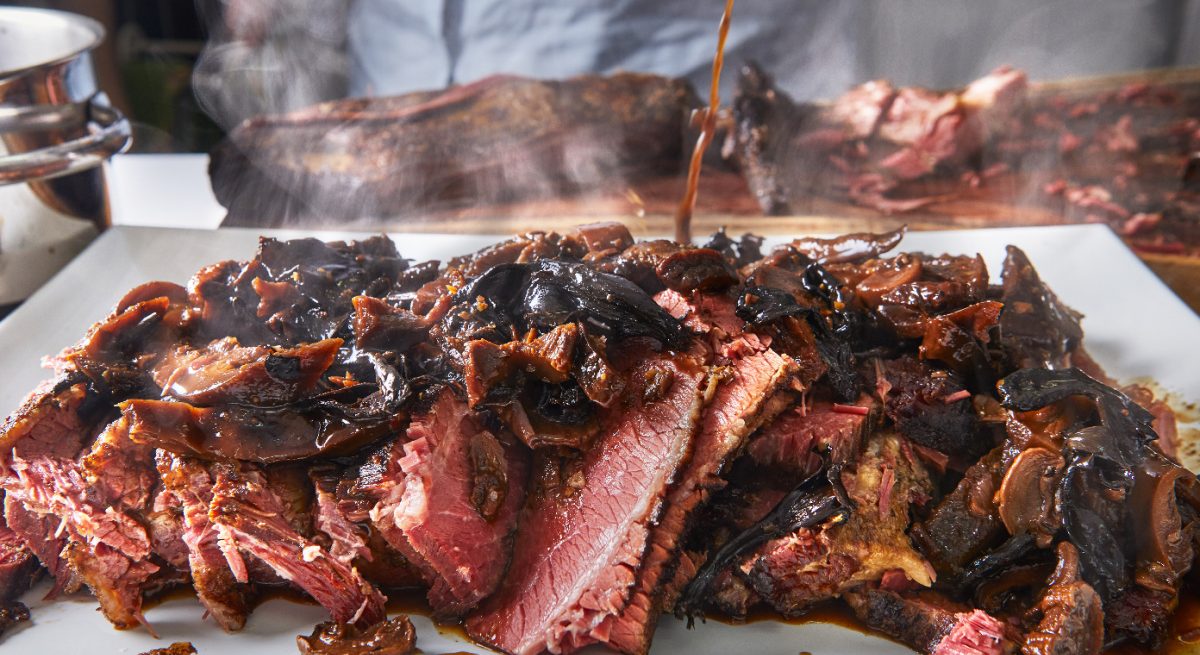Common Hazards Associated with Meat Smoking
2 Min Read By Jarrett Wagner
It’s no surprise that many restaurant owners, especially Texans, rely on meat smokers as a staple cooking appliance. When serving a large customer base, smokers are a huge asset to restaurants. While smokers can be credited for creating some restaurants' finest dishes, they can be a great hazard to one’s business if not properly maintained.
Kitchen fires can cause an overwhelming amount of damage to a restaurant’s operation. The National Fire Protection Association (NFPA) reported that cooking equipment is the leading cause of fires in dining establishments. Though most business owners are aware of the basic safety hazards involved with general kitchen appliances, meat smokers contain unique hazards that require close attention. Society Insurance has established a list of meat smoking hazards and how to prevent these hazards from causing significant damage to one’s business.
Clean and Properly Dispose of Hazardous Material and Build Up
Creosote is one of the most common hazards that can be found during the meat smoking process. Creosote is tar created by burning wood that will build up in your cooking equipment and could potentially start a fire. Due to its high level of combustibility, creosote is often a major contributor to exhaust fires and could pose a serious threat to your space. It is suggested to have all appliances properly inspected to ensure that your business is adequately protected from any risk.
Closely Follow Installation and Inspection Procedures
The installation process for meat smokers is a critical step that must be completed in line with NFPA standards. The NFPA serves to eliminate death, injury, property and economic loss due to fire hazards. With any purchase of a new appliance, it is recommended to closely review the manufacturer and owner’s manual for proper guidelines and instructions. Select a contractor who specializes in servicing and installing commercial cooking equipment to ensure compliance with NFPA 96 standards. A certified professional is required to inspect and/or clean your exhaust system on a monthly basis for smoking and solid fuel cooking operations..
Remove Ash, Hot Coals and Wood Chips After Each Smoke Cycle
After you put your smoker to use, you must remove any leftover ash, hot coals and wood. There are specific guidelines that employees should follow when handling these remaining materials. Employees should always wear heat-resistant gloves during the removal process. Once the removal process is complete, the materials should be emptied into a covered metal container for the sole purpose of hot ash storage. The materials should be sprayed with water and stored outside the premises. Do not dispose of ash and coals directly into a dumpster as they can reignite and start a fire.
Carbon Monoxide Exposure
An additional hazard associated with smokers is exposure to carbon monoxide. The gas that is released when burning materials could be extremely dangerous to individuals if inhaled. Be aware of the symptoms of exposure and do not hesitate to seek medical attention if someone is believed to be at risk.
With meat smokers becoming increasingly popular, it is crucial that those who own and operate them are aware of all potential hazards. Society Insurance suggests taking all preventive measures to protect your employees and mitigate the risk of fire damage to your business.


